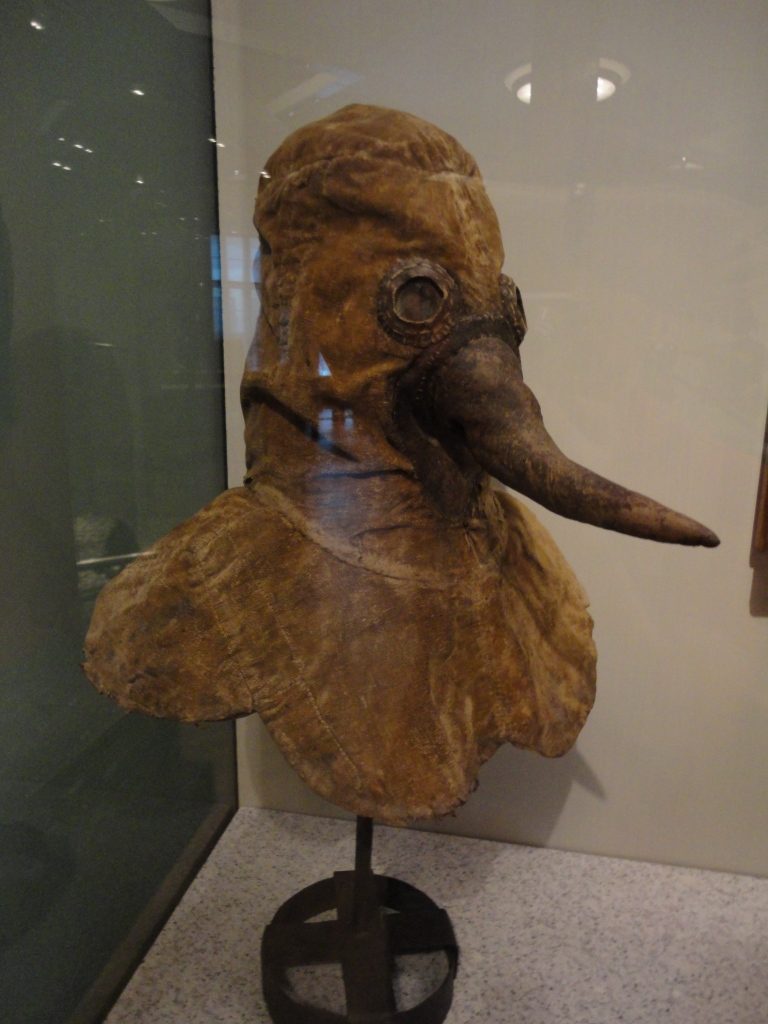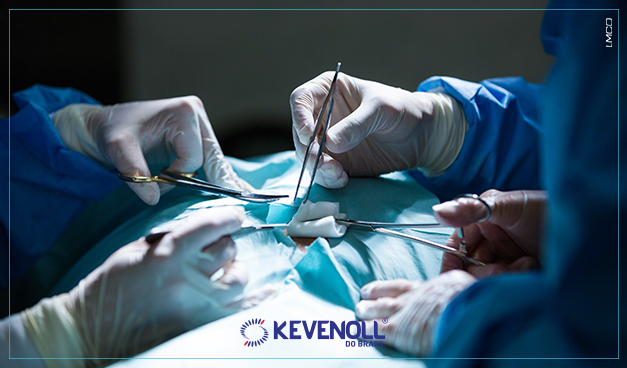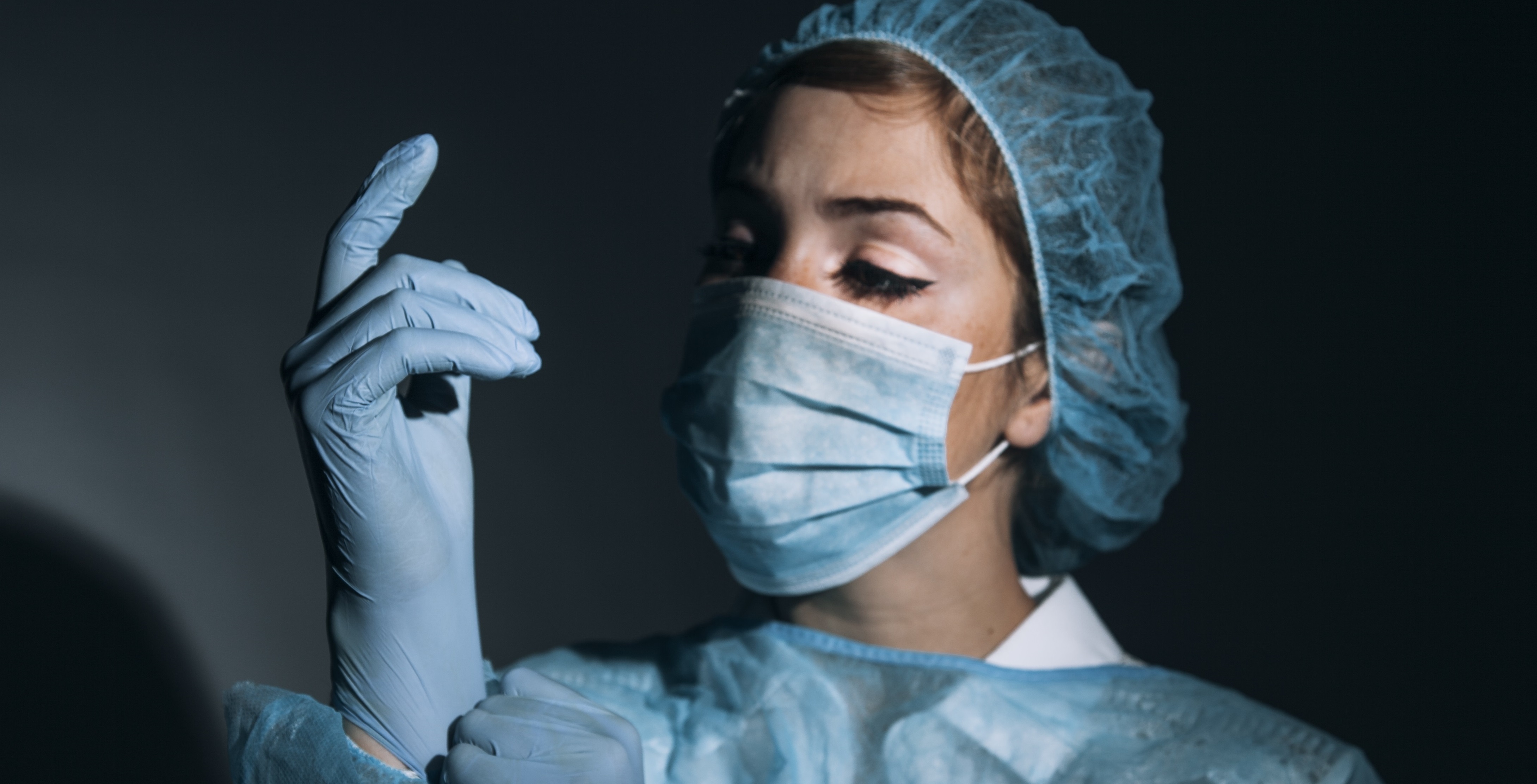Medical procedure gloves (sterile or not) are indispensable items in clinics and hospitals around the world. The asepsis and rigorous cleaning of the hospital environment, as well as the hands and clothes of health professionals, ensures that there is no cross-contamination – the transfer of microorganisms from health professionals to patients and vice versa.
But it was not always that the cleaning and wearing of gloves were seen with good eyes by health professionals. In fact, in the Middle Ages, dirt was a symbol that the doctor was good and worked well. The first gloves worn by doctors and nurses appeared at that time, at the end of the middle ages, with the function of protecting them from the Bubonic Plague in Europe. The gloves were made of goat leather, waxed with a layer of animal fat to waterproof them.
 In addition, a leather coat, hat, mask and a beak that covered the entire nose, were part of the set. All this clothing was created in the early 17th century by Charles L’Orme, physician to the King of France, Louis VIII. The idea was that the costume would work more or less like the clothes of scientists working with biological agents today. But all that paraphernalia was ineffective and only helped spread more diseases.
In addition, a leather coat, hat, mask and a beak that covered the entire nose, were part of the set. All this clothing was created in the early 17th century by Charles L’Orme, physician to the King of France, Louis VIII. The idea was that the costume would work more or less like the clothes of scientists working with biological agents today. But all that paraphernalia was ineffective and only helped spread more diseases.
It was in 1864 that Loius Pasteur would present the experiment that proved the existence of microscopic germs in the Earth’s atmosphere, capable of causing numerous infections. The following year, in 1865, following Pasteur’s theory, surgeon Joseph Lister began using phrenic acid as a barrier against septicemia. He was the first surgeon to perform operations in a sterile chamber, spraying antiseptic into the air to eliminate germs, which caused mortality rates and generalized infections to drop significantly at the time.
In 1890, Johann Von Mikulicz, a Polish surgeon defending the use of antiseptics, began wearing cloth gloves while operating, in addition to a gauze mask, similar to the model used today by doctors and other health professionals.
The first rubber gloves (Gloves of Love):
The first rubber surgical gloves were created by the American surgeon William Stewart Halsted (1852 – 1922). Halsted has the name well marked in the history of medicine, and the creation of many surgical procedures and instruments are charged to him, such as Halsted Surgery, Halsted Suture, Halsted Tweezers, among others.
But the history of gloves is not as connected to your genius as it is to your love. That’s right, it was the fact that William Halsted fell in love that allowed the rubber surgical gloves to be created.
Medicine was still learning to prevent infections in surgical procedures, and in 1890 Halsted was a surgeon and professor at John Hopkins Hospital, which was also a university hospital. Halsted and his team followed a rigorous procedure of hand antisepsis, dipping them into phrenic acid solutions.
Caroline Hamptom was Halsted’s surgical instrumentator, and developed a serious dermatitis, provoked by contact with the antiseptic solutions used in surgeries. This allergy was putting the nurse’s career at risk, causing her to plan to leave the doctor’s team.
Afraid of losing her best nurse, William Halsted contacted the Goodyear Rubber Company to make a pair of slender rubber gloves, so Caroline could dip her hands protected by gloves in the solution without further damage to her skin.
It is believed that Halsted was in love with Caroline, even though, shortly thereafter they married and lived the rest of their lives together.
One of Halsted’s assistants, Joseph Bloodgood, realized that in reality the gloves alone represented a better way to obtain asepsis, as it could be sterilized previously. The doctor went on to wear, along with his entire team, gloves equal to Caroline’s in hernia surgeries, and the infections dropped to almost zero.
Not many years later, gloves were adopted as a mandatory item in several hospitals in the United States and Europe, and today they are already of mandatory standard use worldwide, serving as a protective barrier for the doctor and patient.
Like? Get to know the different types of procedure gloves, and find the right glove for your activity.


